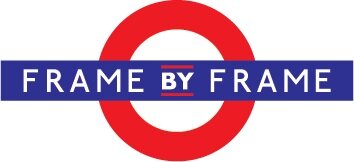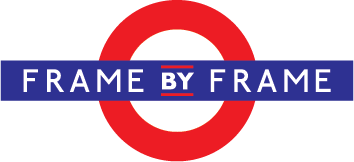Framing Tips and Tricks
Before you come to see us:
Be cautious of removing your work from the packaging.
We know it can be difficult to resist the temptation, but if your work is rolled up in a tube or safe and secure in a folder or some other sort of packaging then you might want to leave it in there until you come in to see us! This ensures that the piece will be as safe as possible until you come to get it framed. It is hard to safely put an artwork back into the tube once you have released it and we have seen some disappointed people find they have creased or otherwise marked a beloved print by doing this.
Consider where you want to hang your new frame once you get it home
You may not be sure about this when you come to see us, and that is completely okay (in fact we advocate framing a piece for the piece not the home), but considering things like wall colour and size, as well as position in relation to lighting, both natural and artificial, are all important factors to be considered when framing your piece.
We go into more detail about this in a recent article, which you can find HERE.
How are you going to hang it?
If you are wanting to hang the piece yourself when you get home, that’s great! As a standard we add a wire across the back to make the hanging process as simple as possible, but if you would prefer we do something else please let us know and we’ll be happy to accommodate.
If you are getting an installer to come in and hang it for you, that too is great information to know. Installers tend to apply their own, so we will leave your frame without hangers if an installer will be working on it.
Installing your picture frame:
Can I use self adhesive hooks?
We only see situations where pieces have come off the wall because of adhesion failure and the subsequent need for repairs and new glass. It seems likely that the problem is not with the hooks, but the surface they are put on. We commonly see that the weight of the frame has caused the hook to peel layers of paint off the wall rather than the hooks themselves failing. If you follow the manufacturers installation instructions you should not have any problems. Note that freshly painted walls need an extended curing time before applying self adhesive hooks.
Wherever possible, however, we recommend using traditional hooks just to be sure. The hole in the wall from the nail is pretty small!
Using Traditional Hooks w/ Pins
When you pick up your framing from us, we will offer you a pack of complimentary hooks to hang your work. We will evaluate your piece and give you the right amount of the right type to ensure they will handle the weight. Single hooks are good up to 10kg and double hooks up to 18kg. Our specific hooks DO NOT need to be put into the wall stud.
These traditional hooks with nails are the most fool proof method for hanging and keeping your piece on the wall, but even traditional hooks can fail if not installed properly. You will notice when you put the nail in the hole at the top that it will slant downwards at an angle. This is how this needs to be nailed into the wall as it stops the nail from potentially slipping out over time from the weight of the frame,
For heavier items, there are other hanging systems available. Mirrors generally require something a bit stronger as the glass being thicker at 5mm means they weigh a lot more than a picture frame the same size.
Hook Placement
What generally recommend using 2 hooks per frame. This is not necessarily about weight distribution (though it does help on the heavier ones) but keeping the piece straight on the wall.
As a guide for where to place these, a general rule of thumb is bring the hook in around 25% of the frame width from the edge on each side. This should give you a good spacing to keep it from shifting on the wall. Avoid putting them really close together in the centre. This will help with the weight distribution but not with the shifting on the wall.
Picture frame aftercare - cleaning, transporting and fixing damage
The glass broke, now what?
Replacing broken glass in a frame is a very common repair request. Reckless movers, temperature changes altering self-adhesive hooks, or excited children can all cause a break for a picture frame.
Many people make the mistake of lying frames facing up when the glass breaks. The best thing to do is remove any loose shards in the middle of the break so they don't stab the work, and then lie it face down on a sheet, blanket or towel that your arent too attached to. This stops the glass from touching the work as much as possible and will hopefully minimise any damage caused by the broken shards. Keeping the artwork face up gives the glass the opportunity to slide around on the work and will often cause damage.
Bring it in to us and we can organise a reglaze for you and make it look beautiful again.
How to clean standard or UV glass
A damp soft cloth (microfibre cloths are great) will remove dust and dirt from the glass and frame. Sometimes the glass might need something a bit more aggressive. Glass cleaner is safe to use on these types. When using glass cleaner, spray it on to the cloth; not the glass, to avoid the risk of the cleaner running down the glass and inside the frame.
How to clean specialty glass products (Museum Glass, Acrylic etc)
Glass cleaner can have a negative effect on specialty glass types, especially if it contains ammonia. It is possible to cause the glazing to become cloudy over time with repeated use. We recommend using a damp cloth to do most of your cleaning. There's not much that can't be removed in this way.
If you happen to get adhesive residue on the perspex for some reason it can be removed with judicious use of lighter fluid (Zippo or Fuelite). If a cleaning product is needed, use perspex cleaner with a damp cloth and blot dry if needed with a damp clean cloth.
A dry cloth may cause scratches, as will the use of any rough or dirty cleaning cloths, so be sure to be gentle. Again, microfibre cloths are good for this.
Be careful in the car!
Framed artwork needs to be handled with care until it is safely installed on your wall. The frames themselves are susceptible to knocks on door jambs and hard parts of your car. What many don't realise is that even a gentle bash on a solid surfance can dent the frame. Be extremely careful when arranging them in the car and taking them out again. Lie them down wherever possible. If you cannot lie them down, ensure that they are braced properly to prevent any damage if you have to brake suddenly on the way home.
If you do lie them flat, lie them face up if they are by themselves. Any other frames going on top of it? Ensure they are face to face and back to back when stacked. The hanging hardware on the back can create some very severe dents and scratches, even if protected by bubble wrap (which will always be around your work where possible when we give it to you).
Putting frames in storage?
If you don't have room on the wall anymore, or are putting things in a storage unit while you move, be sure to keep all frames upright, especially pieces that have been floated. The conservation framing process means that we tape your work into the frame with acid free tapes, and are mostly taped from the top to carry the weight. If they are stored on their side or upside down, the work will likely slip and fold up over time when gravity is coming at it from a different direction.
Also, be sure to protect them sufficiently and put them carefully somewhere safe and dry. Framing is not completely moisture tight and putting it in a humid or damp environment puts the piece at risk.
Need it delivered?
We generally avoid standard couriers with picture framing as they don't always operate with the requisite care. If the piece is too big for you to take away in your own car, or you need it delivered for other reasons, we recommend Man With a Van. He has a lot of experience with picture frame delivery and has been our go-to guy for many years.
Let us know if you need him, and we will organise everything for you and just add the delivery charge to your invoice to make life easy. Within Central Auckland the cost is $69.00.
Alternatively, if it will fit in the Frame by Frame station wagon we'll drop it off for free!

